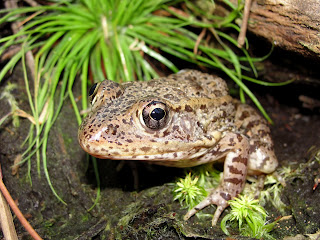


Northern Saw-whet Owl (Aegolius acadicus)
My friend Lori set up an opportunity to capture and band these fantastic little owls while we were up in Virginia. I had assisted in this (mostly as a tourist) in Indiana one year, but this was my first time removing the owls from the nets and banding and measuring them myself.

American Robin (Turdus migratorius)
This robin just looked stuffed beneath an American persimmon (Diospyros virginiana) tree that had dropped a lot of ripe fruit. I partook of some of the fruit and then photographed this bird that may have been too full to be very concerned with my proximity!

Virginia Opossum (Didelphis virginiana)
Even though these animals look like oversized rats, I really enjoy seeing them. Interestingly, they are the only marsupial that occurs in the U.S.


Unknown fungus. I just liked how these looked.














































